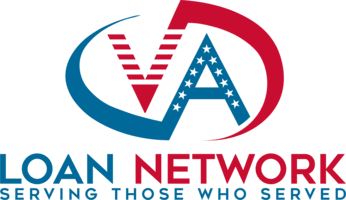Last Updated June 17th, 2025
Foreclosed homes, often perceived as risky ventures, can actually present significant opportunities—especially for veterans interested in buying a foreclosure with a VA loan.
While you can frequently find these properties at below-market prices, understanding the unique rules, processes, and challenges is crucial for a successful purchase.
This guide goes well beyond the basics, offering detailed insights into every step of using a VA loan to buy a foreclosure.
In this Article
Why Foreclosures Appeal to VA Buyers
What Are the Benefits of Buying a Foreclosure with a VA Loan?
Foreclosures are often listed 10–25 percent below comparable, move‑in‑ready homes, giving VA‑eligible borrowers a head start on equity. Pairing these lower prices with the perks of a
VA loan — such as $0 down payment, no monthly mortgage insurance, and competitive interest rates — creates a powerful affordability combo for Veterans and service members.
Key Advantages of Foreclosed Properties
- Lower Purchase Price: Homes sold below market value can shrink your overall loan balance.
- Instant or Rapid Equity Growth: Sweat‑equity repairs and market appreciation can add value quickly.
- Potentially Less Buyer Competition: Condition issues and financing hurdles deter some conventional buyers.
- VA‑Friendly Terms: Many REO departments are familiar with VA financing addendums.
Expert Tip: “Always set aside at least 10 percent of the purchase price for post‑closing repairs, even if the property looks solid. Hidden defects can wipe out your savings if you don’t plan ahead.” — Laura Collins, Foreclosure Specialist, Elite Realty
Types of Foreclosures: REO, HUD, Fannie/Freddie, Auctions
Understanding foreclosure categories helps you anticipate seller expectations, repair allowances, and VA‑specific hurdles.
| Type | Who Owns/Sells? | Typical Discount* | Financing & Logistics | |
|---|---|---|---|---|
| VA Loan Feasibility | Inspection Access | |||
| REO (Real Estate‑Owned) | Bank or Mortgage Servicer | 10–20 % | Generally VA‑compatible. Lender addendums must be signed; VA Minimum Property Requirements (MPRs) still apply. | Full interior access; utilities usually on for inspections. |
| HUD Homes | U.S. Department of Housing & Urban Development (HUD.gov) | 15–25 % | Sold “as‑is.” VA buyers can bid during the “All Bidders” phase. Repair escrow may be required. | Access allowed during specific inspection windows; utilities may or may not be active. |
| Fannie Mae HomePath / Freddie Mac HomeSteps | Fannie Mae or Freddie Mac | 5–15 % | VA financing permitted; strict deadlines for appraisal & repairs. Some repairs may be non‑negotiable. | Usually full access; winterization policies may limit plumbing tests. |
| Auctions (In‑Person & Online) | County Sheriff, Trustee, or Auction Platform | Varies widely | Difficult with VA loans. Cash or hard‑money often required at the hammer; post‑sale financing windows are short. | Limited or no access before bidding; property sold “as‑is/where‑is.” |
*Discount ranges are national averages compiled from HUD, Freddie, and CoreLogic 2024 market reports.
Key Takeaway: REO and HUD homes generally offer the smoothest path for VA financing, whereas auction properties present extreme inspection and timing challenges.
VA Loan Basics for Foreclosures in 2025
Eligibility Snapshot
- Meet 2025 VA minimum service requirements (active duty, Guard/Reserve, or qualifying spouse).
- Obtain your Certificate of Eligibility (COE) electronically through your lender or VA eBenefits.
Credit & Income Guidelines
- Credit Score: Most VA lenders require 580–620+. Some portfolio lenders dip to 550 with compensating factors.
- DTI Ratio: Aim for ≤ 41 %. Automated underwriting (AUS) approvals may allow up to ~55 % with strong residual income.
- Residual Income Test: Unique to the VA program; ensures you have funds left over after major obligations.
Occupancy Rule
You must occupy the property as your primary residence within 60 days (extensions up to 12 months possible for substantial rehab).
Navigating VA MPRs in the 2025 Foreclosure Market
VA Minimum Property Requirements (MPRs) focus on three pillars:
- Safety — no exposed wiring, trip hazards, or lead‑based paint for pre‑1978 homes.
- Structural Soundness — roof, foundation, and major systems must be serviceable for “reasonable life expectancy.”
- Sanitation — functional plumbing, water, and waste systems.
| MPR Category | Common Foreclosure Finding | Typical Resolution Path | Who Pays? |
|---|---|---|---|
| Roof Integrity | Missing shingles / leaks | Repair or replace damaged sections; provide 3‑yr roof life certification | Buyer (via VA Renovation Loan) or escrow holdback; seller credits rare |
| Electrical Safety | Exposed wiring or missing fixtures | Licensed electrician to remedy; provide compliance letter | Buyer |
| Plumbing Function | Winterized system / broken water main | Dewinterize & pressure test; repair leaks | Buyer (or seller if REO addendum allows) |
| HVAC | Non‑working furnace | Service, repair, or replace; must heat to 50 °F in all areas | Buyer |
VA Appraisal vs. Home Inspection
- VA Appraisal: Valid for 180 days. Includes Notice of Value (NOV) and “Lender‑or‑Buyer‑Required Repairs.”
- Home Inspection: Deep‑dive; not required by VA but critical for uncovering hidden or deferred maintenance.
Expert Quote: “Expect at least one re‑inspection on foreclosure deals. Budget both time and money for that second visit.” — John Harrison, Mortgage Advisor, HomeTrust Financial
Handling MPR Repairs: VA Renovation Loans & More
Who Pays for Repairs?
- Buyer: Most common, especially for REO/HUD. Costs can be financed using a VA Renovation Loan or out‑of‑pocket.
- Seller (Bank/Gov’t Agency): Occasionally offers credits or limited repairs to facilitate financing, particularly for health‑and‑safety issues.
Financing Options
- VA Renovation Loan — finances up to $50,000–75,000 in eligible repairs.
- Escrow Holdback — up to the greater of $5,000 or 1 % of purchase price; funds released post‑closing.
- Energy Efficient Mortgage Add‑On — finance up to $6,000 for qualifying upgrades (windows, insulation).
Timing of Repairs
Repairs flagged by the VA appraiser must be completed before closing unless your lender allows an escrow holdback. Coordinate contractors early to avoid closing delays.
Making an Offer on a Foreclosed Property
Key Considerations
- REO Addendums: Banks dictate timelines, per‑diem penalties, and “as‑is” clauses.
- Repair Budget Cushion: Add ≥ 10 % to your projected rehab cost for contingencies.
- Earnest Money: Some sellers require certified funds within 24–48 hr of offer acceptance.
Offer Strategies
- Get Desktop Pre‑Approval + Automated Underwriting: Speeds up seller acceptance.
- Lead With Near‑List Price: Cash investors are your main competition; strong VA offers close the gap.
- Request Closing‑Cost Credits vs. Repairs: Banks rarely fix items but may credit up to 3 % of price.
Risks & Considerations
Title & Lien Issues
- Property Tax Liens: Verify through county treasurer.
- Mechanic’s Liens: Contractors can cloud title; always buy an owner’s title policy.
- HOA Super‑Liens: Some states give HOA fees priority over mortgages; confirm status.
Hidden DamageVacant properties can suffer burst pipes, mold, or vandalism. Comprehensive inspections and, if needed, specialty tests (sewer scope, mold air sampling) are vital.
Appraisal GapsIf the NOV is lower than contract price, you must renegotiate, pay the difference in cash, or invoke the VA “Reconsideration of Value” process (VA.gov Housing‑Assistance).
Extended TimelinesExpect 45–90 days. Government shutdowns or bank backlogs can push closings beyond the rate‑lock period.
Where to Find Foreclosures Suitable for VA Loans
Online Resources
- HUD Home Store
- Fannie Mae HomePath
- Freddie Mac HomeSteps
- Major bank REO portals (Wells Fargo, Chase, Bank of America)
- Aggregator sites (Zillow, Realtor.com) with Foreclosure filters
Specialized Agents & Networking
- Agents certified in REO/Default Property — Short Sale & Foreclosure Resource (SFR®).
- County foreclosure auction notices (varies by state law).
- Local Veteran networking groups and social media pages.
Pro Tip: Bookmark the VA Foreclosure Avoidance & Alternatives page for the latest guidance and resources.
Expected Timelines & Process Differences in the 2025 Market
| Process Stage | Standard VA Purchase | Foreclosure (REO/HUD) Purchase | Foreclosure Auction Purchase |
|---|---|---|---|
| Property Search | 2–8 weeks | 4–12 weeks (inventory constraints) | 1–4 weeks (sale dates fixed) |
| Offer Acceptance | 24–72 hrs | 7–14 days (bank/agency review) | N/A – auction hammer sets terms |
| Appraisal & Inspections | 14 days combined | 21–30 days (re‑inspections common) | Post‑sale only (buyer risk) |
| Loan Underwriting | 10–15 business days | 15–30 business days (repair escrow review) | Hard‑money or cash; refi later |
| Closing to Keys | 30–45 days total | 45–90 days total | As little as 10 days (cash) — VA refi after 6 months seasoning |
Patience and proactive project management are essential for foreclosure purchases.
Step‑by‑Step 2025 Foreclosure Purchase with a VA Loan
- Secure Pre‑Approval: Provide income, asset, & COE documents.
- Research Listings: Prioritize REO & HUD inventories that likely meet MPRs.
- Hire Experts: Engage a foreclosure‑savvy REALTOR® and licensed home inspector.
- Submit Offer & Addendums: Follow seller‑specific contract forms.
- Order VA Appraisal: Lender initiates; address MPR repairs promptly.
- Lock Rate & Finalize Financing: Plan for possible extensions.
- Clear Title & Insurance: Resolve liens; purchase owner’s title policy.
- Final Walk‑Through: Confirm repairs and property condition.
- Close & Occupy: Sign documents, fund loan, move in within VA’s occupancy window.
FAQs
Can I use a VA loan on any foreclosure?
Yes, provided the property meets VA MPRs and you fulfill eligibility. Auction‑purchased homes usually require interim cash financing before refinancing into a VA loan.
What if the appraised value is lower than my offer?
You may renegotiate, pay the difference, or request a Reconsideration of Value (ROV). See the VA’s Appraiser & Staff Appraisal Reviewer Guidance page.
Are HUD homes good candidates for VA buyers?
Often, yes. HUD will accept VA financing; ensure the property can meet MPRs or budget for repairs via a VA Renovation Loan.
How soon can I refinance with a VA IRRRL after buying a foreclosure?
The VA mandates a 210‑day (or six payment) seasoning period, whichever is longer, before an Interest Rate Reduction Refinance Loan (IRRRL).
Strengthening Your Foreclosure Purchase with Expert Guidance
Buying a foreclosure with a VA loan can yield substantial savings and equity upside, but success hinges on diligent planning, seasoned professionals, and strict adherence to VA guidelines. By leveraging tools like VA Renovation Loans, understanding MPR hurdles, and working with foreclosure‑savvy real estate and lending teams, Veterans can transform distressed properties into safe, comfortable, and appreciating homes.
Additional Resources:
- VA.gov Home Loan Programs
- HUD Foreclosure Assistance
- Fannie Mae HomePath
- Freddie Mac HomeSteps
- CFPB Mortgage FAQs
- USA.gov Housing Resources
Bottom Line: With the right preparation, realistic budgeting, and expert guidance, a foreclosure purchased with a VA loan can become both an affordable residence and a smart long‑term investment.


